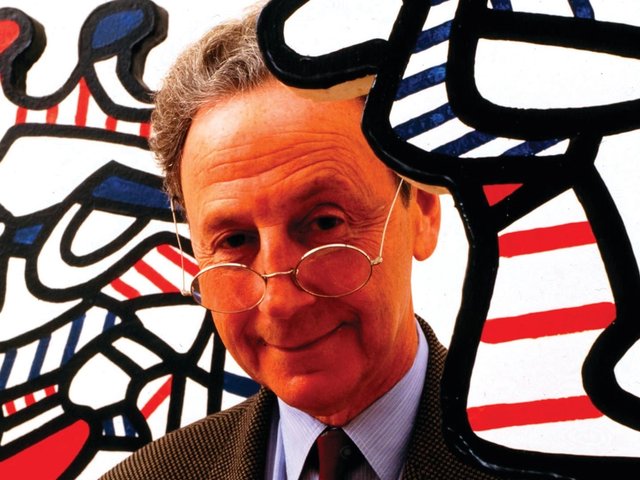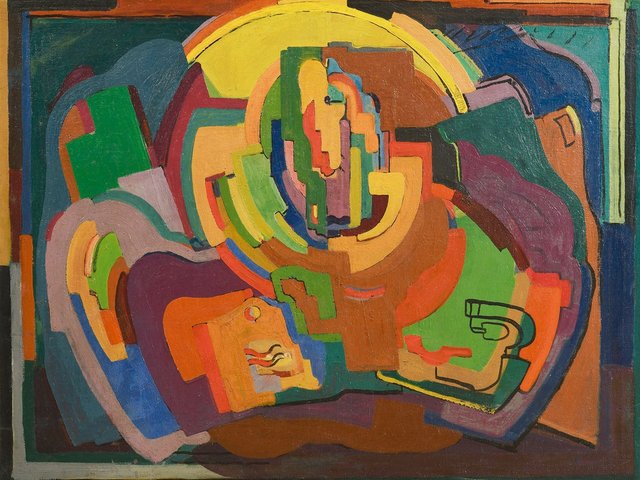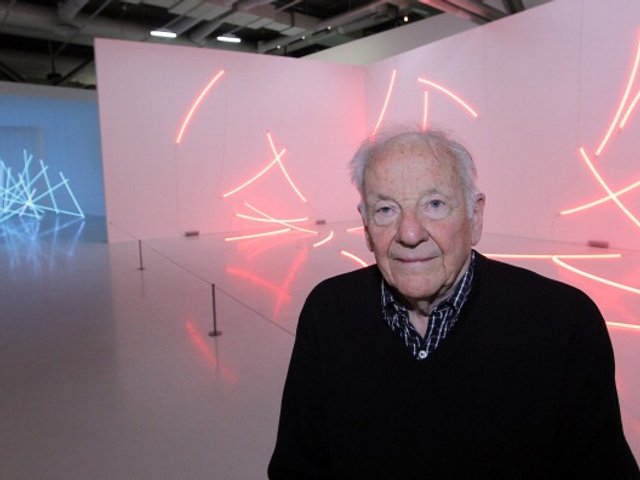Leslie Waddington, for decades London’s pre-eminent Cork Street art dealer and a major figure in the development of the post-war British art world, died on 30 November at the age of 81. He was born to a Jewish family in Dublin in 1934 and educated at the Portora Royal School in Northern Ireland.
His father Victor Waddington set up a gallery in Dublin in the late 1920s that showed the work of many of the great European Modernists, including Picasso, Matisse and Soutine, as well as the work of avant-garde Irish artists such as Jack Yeats. These early family connections and experiences fired Leslie’s passion for Modernism. This passion never left him and remained the bedrock of his understanding and appreciation of art throughout his life.
He went on to study at the Ecole du Louvre in Paris and joined his father’s newly opened London gallery in 1958. He encouraged the gallery to support the St Ives school and other Modern British artists such as Patrick Heron, Terry Frost and Ivon Hitchens. When he opened his own gallery in 1966 he showed American Colour Field painters such as Kenneth Noland and Morris Louis, and championed New Generation painters such as John Hoyland and Patrick Caulfield, and sculptors including Bill Turnbull and Tim Scott. He corresponded extensively with Clement Greenberg, by far the most important American art critic of the 60s, then at the height of his influence. Over the following years he showed an increasing range of British and international artists, including Judd, Baselitz, Paladino, Albers, Rauschenberg, Flanagan, Hodgkin and Halley. In the 90s, he introduced young British artists such as Ian Davenport, Fiona Rae and Lisa Milroy.
Personal memories I first came to know him in 1980 when we were introduced by Hester van Royen, and he expressed a wish to represent my work. I was surprised as I knew that he had not previously engaged with the conceptually based art of my generation. We got on well from the start. Perhaps it was partly to do with the fact that I too had been born in Dublin. He was always, to my mind, very Irish in character. I worked with him for 20 years, doing many shows together. I liked the very straightforward way he spoke about the gallery as a business—he was extraordinarily good at selling art. He allowed me the luxury of making some shows with little commercial viability as well as others that made good money. Before joining his gallery I had never made enough money from the sale of my work to break my dependence on teaching, but by 1988, he had made this possible for the first time, and I was able to resign.
It would be accurate to describe him as old school. He embodied what it meant to be a cultivated person: he was extremely well read, a Francophile with a wide knowledge of French literature and philosophy. He had a passion for classical music and opera, and appreciated fine wines and good food. He was a generous and considerate host who enjoyed the friendship of a wide range of people, and shared his pleasure in the arts, ideas, conversation, gossip and good humour.
He was greatly respected by his clients, artists and peers alike for his scrupulous honesty. He saved his greatest contempt for those in the art world he considered less than honest. Every work he sold came with a detailed provenance. In the mid 90s his sharp eye and instinctive integrity uncovered a major art fraud that had taken in many reputable individuals and institutions. While others found ways to minimise their taxes, he considered it a moral and civic duty to pay his in full, and always did so. He gave generously to many public art institutions and other charities, but always anonymously. He was not interested in honours or awards, but was genuinely touched when at the 2013 edition of Art Basel he received from his peers the Federation of European Art Galleries Association’s lifetime achievement award, presented by Nicholas Serota, his long-standing friend and the director of the Tate.
He loved art and was extremely knowledgeable about it. His London home was filled with great works by the artists he admired. At the gallery he regularly presented group exhibitions, with work by contemporary artists alongside Modern masters. It was fascinating—and often sobering—to see one’s own work next to a Léger or a Miró. Occasionally he would phone me excitedly to say he had just bought something exceptional, perhaps a late Picasso or a Dubuffet, a classic Agnes Martin or an Albers, and could I come to the gallery right away to see it. We would sit together for ages in the viewing room to consider and discuss it.
We did not always agree. He couldn’t stand cant or pretension, but he could be stubborn, mercurial, opinionated and outspoken. Like many great dealers, he was not an easy man to work for, yet most of his employees and associates were fiercely loyal and continued to work with him for many years. He was well aware that he could not have had the rich and happy life and career he had enjoyed over the past 30 years without the extraordinary commitment and support of his wife Clodagh. There was never the slightest possibility that he would retire—his work was his life—and he continued to go to the gallery as often as he could even as his health failed. He was a very special person. I will miss him greatly.
• Leslie Waddington, born 9 February 1934, died 30 November 2015




